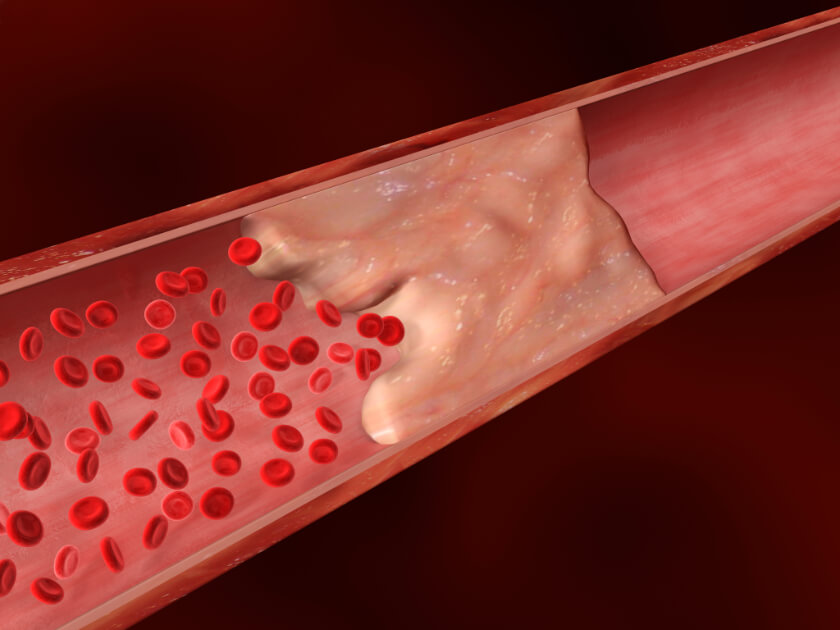

What is Calcified Plaque?

Atherosclerosis is a serious health condition in which calcified plaque builds up inside your arteries. This calcified plaque causes the arteries to become hard and narrow, which can prevent blood from flowing through your veins and increase your risk for blood clots, heart attack, or stroke.
But what exactly is calcified plaque?
Plaque is a waxy substance that consists of deposits of fatty substances, cholesterol, waste products from cells, and blood-clotting material known as fibrin in the bloodstream. In some cases, plaque can contain calcium that can harden, or calcify.
Plaque that does not contain excess calcium is considered “soft” or vulnerable plaque. Left untreated, this soft plaque can lead to heart and blood vessel problems, such as heart attack, stroke, or heart failure, if the plaque separates from the arterial walls or otherwise blocks the flow of blood to the heart or the brain.
For many years, the body of medical research suggested that soft plaque was more likely to cause heart attacks, but new research shows calcified plaque or “hard” plaque may be a better indicator of serious coronary conditions. Measuring calcified plaque can help doctors identify patients at higher risk for heart problems. While treatment cannot completely remove all traces of plaque, statins and other medications can greatly reduce the levels of plaque and decrease your risk for adverse coronary events.
About Calcium and Calcification
Calcium is an important mineral that helps keep your bones and teeth strong; calcium also plays a role in other processes going on inside your body. Normally, 99 percent of the calcium entering your body ends up in your bones and teeth. The rest of the calcium dissolves in your blood; excess calcium can build up in your blood.
Calcification is a process in which calcium accumulates in body tissue, causing the affected tissue to stiffen and harden. Sometimes calcification is a normal and healthy process – calcification helps broken bones heal, for example. However, calcification can be an abnormal and unhealthy process when it occurs to plaque within your blood vessels, and especially when it happens to the plaque in your arteries.
Arteries are blood vessels that move oxygen- and nutrient-rich blood from your heart and lungs to the rest of your body. The coronary arteries supply blood to the heart. Calcified plaque can cause arterial disease, or diseases of these arteries.
In the early stages of arterial disease, the lining of the arteries becomes inflamed. This inflammation of the arterial lining allows plaque to form on the walls of the artery. Plaque can sometimes break free, or rupture, from the wall of the artery. Your body responds to the rupture by forming a clot to heal the lesion, or sore, left behind. If the clot is large, it could completely block off the artery quite abruptly to cause a heart attack or sudden death.
Calcified Plaque is a Sign of Atherosclerosis
The presence of calcified plaque in the arteries is a clinical marker of atherosclerosis, which means doctors can estimate the severity of your heart disease by measuring the amount of calcified plaque in key locations within your body.
In other words, your doctor can assess your risk for heart disease and heart attack by measuring the amount of calcified plaque through the use of computed tomography (CT) scanning. Based on the level of plaque present, your doctor will assign you a “calcium score.“
Calcium Score Results
Zero: No plaque is present, so your risk of heart attack is low.
1 – 10: Small amount of calcified plaque is present; this score means you have less than a 10 percent chance of having heart disease, and that your risk of having a heart attack is low. Lifestyle changes may lower your risk even further.
11-100: Some calcified plaque is present, which suggests that you have mild heart disease along with a moderate chance of heart attack. Your doctor may suggest that you undergo treatment in addition to lifestyle changes.
101 – 400: Moderate amount of calcified plaque is present; you have heart disease at this stage and plaque may be blocking blood flow within an artery. You have a moderate to high chance of having a heart attack. Your health professional will likely order more tests and may start treatment.
Over 400: Large amount of calcified plaque is present and there is more than a 90 percent chance that the plaque is blocking one of your arteries, which means you have a high chance of having a heart attack. More tests and treatment are necessary.
For more information about calcified plaque, consult with your doctor or radiology team. Calcium scoring is an easy, non-invasive way to measure calcified plaque that may be putting you at a greater risk for heart disease, heart attack, and stroke.





